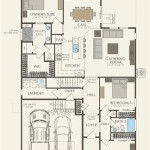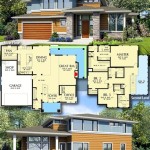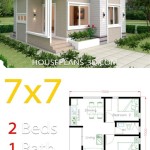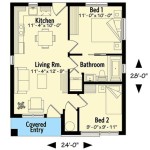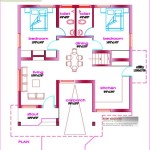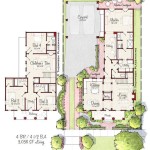Building Plans for Container Homes: A Comprehensive Guide
The concept of container homes has gained considerable traction in recent years as a viable and often more affordable alternative to traditional housing. These structures, crafted from repurposed shipping containers, offer a unique blend of sustainability, durability, and design flexibility. However, realizing the dream of a container home requires meticulous planning and a thorough understanding of the building process, starting with comprehensive and accurate building plans.
Building plans for container homes are significantly different from those used for conventional construction. They must account for the unique properties of shipping containers, including their structural limitations, dimensions, and susceptibility to corrosion. Selecting the right plans and understanding the intricacies involved is crucial for a successful and legally compliant build. This article provides a detailed overview of the essential considerations when developing building plans for container homes.
Understanding Container Home Plan Essentials
Container home plans are not simply blueprints; they are comprehensive documents that guide the entire construction process. These plans must incorporate various elements, ranging from site preparation to interior finishing. Key components include site plans, foundation plans, floor plans, electrical and plumbing layouts, structural details, and material specifications.
A site plan depicts the location of the container home on the property, including its orientation, setbacks from property lines, and the location of utility connections (water, sewer, electricity). This plan is essential for obtaining building permits and ensuring compliance with local zoning regulations. Accurate site plans are crucial for integrating the container home seamlessly into its environment.
Foundation plans detail the type of foundation required to support the container structure. The foundation design must consider soil conditions, seismic activity, and the weight distribution of the containers. Common foundation types for container homes include concrete slabs, piers, and perimeter foundations. A well-designed foundation is crucial for the stability and longevity of the structure.
Floor plans illustrate the layout of the interior spaces within the container home. These plans specify the location of rooms, walls, doors, windows, and fixtures. When designing floor plans, careful consideration must be given to space optimization, functionality, and accessibility. The floor plan should facilitate comfortable living and efficient use of the limited space available within a shipping container.
Electrical and plumbing layouts detail the location of electrical wiring, outlets, fixtures, and plumbing pipes. These layouts must comply with local building codes and ensure the safe and efficient operation of the home's electrical and plumbing systems. Proper planning of these systems is critical for avoiding costly and potentially dangerous issues later in the construction process.
Structural details provide information on how the containers are joined together, reinforced, and modified to meet structural requirements. These details include welding specifications, insulation methods, and the placement of support columns or beams. Structural integrity is paramount in container home construction, and these details ensure the home can withstand environmental stresses and maintain its stability.
Material specifications list the types and quantities of materials needed for the construction project, including lumber, insulation, siding, roofing, and finishes. Accurate material specifications are essential for budgeting and ordering materials efficiently, preventing delays and cost overruns.
Key Considerations in Container Home Design
Container home design requires careful consideration of several factors that are not typically relevant in traditional construction. These factors include container selection, structural modifications, insulation, weatherproofing, and compliance with building codes.
Container selection involves choosing the appropriate type and condition of shipping containers for the project. Containers are typically available in 20-foot and 40-foot lengths, and their condition can range from brand new to significantly used. Selecting containers with minimal rust and structural damage is crucial for ensuring the longevity and structural integrity of the home.
Structural modifications are often necessary to create functional living spaces within the containers. These modifications may include cutting openings for windows and doors, reinforcing the container walls, and adding support structures. It is essential to consult with a structural engineer to ensure that these modifications do not compromise the structural integrity of the containers. Welding and cutting must be performed by certified professionals to ensure safety and compliance with building codes.
Insulation is a critical aspect of container home design, as metal containers are poor insulators and can be prone to condensation. Various insulation methods can be used, including spray foam, rigid foam boards, and batt insulation. The choice of insulation material depends on factors such as climate, budget, and desired R-value. Proper insulation is essential for maintaining a comfortable indoor environment and reducing energy consumption.
Weatherproofing is essential to protect the container home from the elements. This includes sealing all joints and seams, applying a waterproof membrane to the roof, and installing appropriate siding. Protecting the containers from moisture is crucial for preventing rust and corrosion, which can significantly reduce the lifespan of the structure. Proper weatherproofing also contributes to energy efficiency and prevents water damage.
Compliance with building codes is a critical aspect of container home construction. Building codes vary by location and may impose specific requirements for container homes. It is essential to research local building codes and obtain the necessary permits before starting construction. Failure to comply with building codes can result in fines, delays, and even the forced demolition of the structure.
Navigating the Building Planning Process
The process of creating building plans for container homes can be complex and time-consuming. It typically involves working with architects, engineers, and contractors to develop a comprehensive set of plans that meet all requirements. The following steps outline a typical building planning process:
Conceptual design is the initial phase, where the overall design and layout of the container home are developed. This phase involves creating sketches, floor plans, and elevations to visualize the final product. The conceptual design should consider the client's needs, budget, and site constraints. The goal of this phase is to create a preliminary design that can be refined and developed into detailed construction plans.
Schematic design involves refining the conceptual design and developing detailed floor plans, elevations, and sections. This phase includes selecting materials, specifying finishes, and determining the overall aesthetic of the container home. The schematic design should provide a clear understanding of the building's form, function, and appearance. This stage allows for adjustments and refinements before moving into the more complex planning stages.
Design development involves further refining the schematic design and developing detailed construction drawings. This phase includes specifying all materials, finishes, and fixtures, as well as detailing all structural, mechanical, electrical, and plumbing systems. The design development phase should result in a complete set of construction drawings that can be used to obtain building permits and guide the construction process. Detailed specifications for all aspects of the construction are finalized in this stage.
Construction documents are prepared based on the design development drawings. These documents include detailed plans, specifications, and shop drawings that provide all the information needed for the contractor to build the container home. The construction documents must comply with all applicable building codes and regulations. Accuracy and clarity are paramount in this phase to prevent errors during construction.
Permitting involves submitting the construction documents to the local building department for review and approval. The building department will review the plans to ensure that they comply with all applicable building codes and regulations. This process may involve multiple revisions and resubmissions. Obtaining the necessary permits is a crucial step in the process and can significantly impact the project timeline.
Construction administration involves overseeing the construction process to ensure that the container home is built according to the construction documents. This may include attending site meetings, reviewing shop drawings, and inspecting the work in progress. The architect or engineer may act as the construction administrator to ensure quality control and compliance with the plans.
Engaging qualified professionals, such as architects, engineers, and experienced container home builders, is crucial for navigating this process effectively. Their expertise can help ensure that the building plans are accurate, compliant, and optimized for the specific site conditions and design goals.

Photo 11 Of 19 In 9 Container Home Floor Plans That Maximize

Container Home Plans Blueprints Housing

Container Home Floor Plan

Design Your Own Container Home Start Now Premier Box

Container Home Floor Plans

Custom Florida House Plans Container Home

Container Home 6 Floorplan

U Shaped Container Home Benefits Ideas Layouts Cedreo

Container House

40ft Container House Floor Plans With 2 Bedrooms Home Designs

